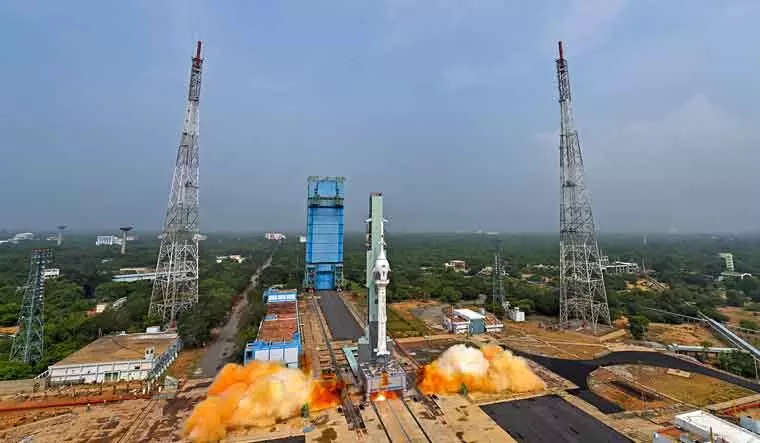Milestones in the cosmos

The Indian Space Research Organisation (ISRO) had ushered in 2024 with a triumphant start, adding another milestone to its impressive space exploration journey. On the very first day of the year, ISRO successfully launched the PSLV-C58 X-ray Polarimeter Satellite (XPoSat) mission, marking India as only the second nation, after the United States, to embark on the ambitious venture of X-ray polarimetry. This mission, dedicated to studying the polarisation of X-rays emitted by celestial objects, represents a significant development in understanding high-energy astrophysical phenomena, including black holes, neutron stars, and pulsars.
The PSLV-C58 has seamlessly executed all of its experiments on the PSLV Orbital Experimental Module (POEM)-3. This platform, which completed an impressive 400 orbits, hosted a suite of nine experiments, each contributing crucial insights into various aspects of space exploration. The experiments included the Women Engineered Satellite (WESAT), designed by the LBS Institute of Technology for Women, which focused on studying the comparison between solar irradiance and UV index. Other experiments involved radiation shielding, amateur radio, three propulsion systems by space start-ups, and an interplanetary dust count initiative by the Physical Research Laboratory. Notably, two fuel cell systems from the Vikram Sarabhai Space Centre were also part of this groundbreaking mission.
The success of these experiments positions the nation as a key player on the global stage. With previous achievements like Chandrayan-III and Aditya L12, India's space sector has consistently showcased innovation and technological advancement. ISRO's commitment to cost-effectiveness is evident in its undeniably efficient space exploration initiatives, making the nation stand out in the international space community. One of the notable aspects of the PSLV-C58 mission is its strategic significance in laying the groundwork for India's ambitious plan to establish a space station in low Earth orbit by 2035. The fuel cell systems onboard are crucial components that contribute to this futuristic goal. Beyond the monumental achievements and cost-effectiveness, ISRO's commitment to responsible space practices and sustainability is commendable. In a concerted effort to tackle the issue of space debris, ISRO has taken proactive measures. By actively lowering the orbits of defunct satellites and rocket stages, the space agency ensures controlled re-entry into Earth's atmosphere, minimising the generation of long-lasting debris. Additionally, the removal of excess fuel from satellites mitigates the risk of accidental explosions or collisions, aligning with global efforts to maintain a sustainable space environment.
ISRO's multifaceted approach, combining cutting-edge technology, strategic vision, and a commitment to sustainability, sets a remarkable precedent for the future of space exploration. As India continues to make strides in the cosmos, the success of the PSLV-C58 mission adds another chapter to the nation's space journey, affirming its role as a trailblazer in the realm of scientific discovery and technological innovation. Going forward, ISRO’s meteorological satellite INSAT-3DS is likely to be launched mid-February on GSLV. Furthermore, ISRO chairman has asserted that 2024 would be the “year of Gaganyan readiness”. The space agency is slated to carry out two more test flights of Flight Test Vehicle Abort Mission (TV-D) followed by unmanned flights. There are more than enough reasons to be hopeful that another eventful year lies ahead for India’s space sector.



